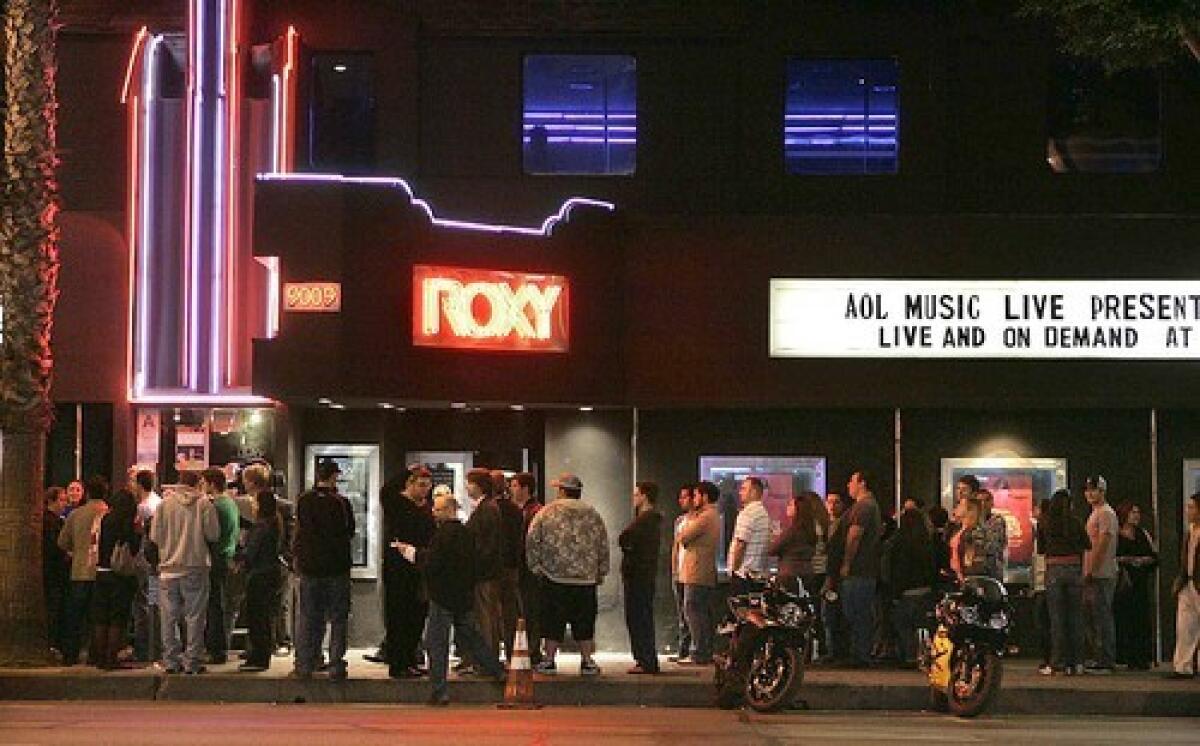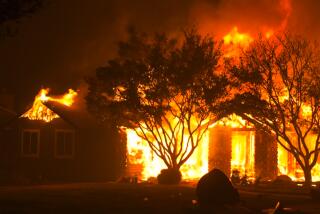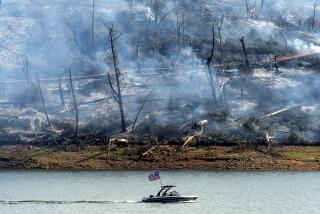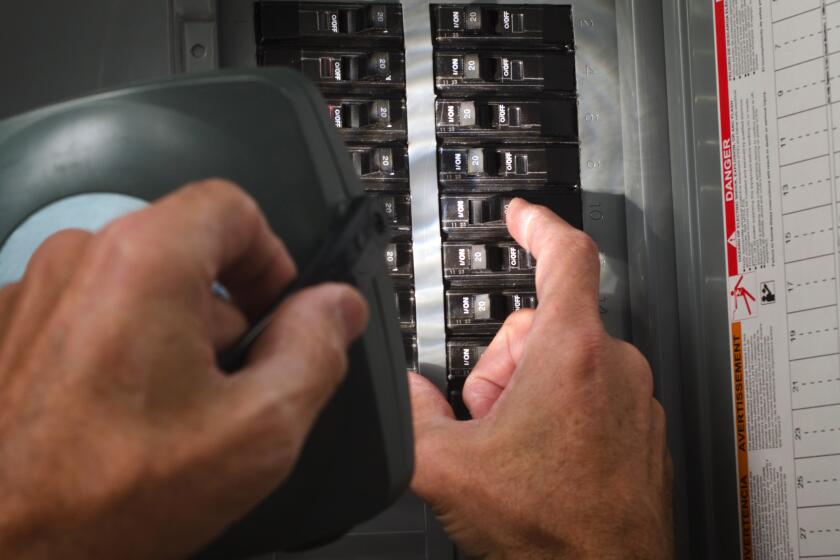Newsletter: How the Camp fire reshaped a town where nothing burned
Good morning, and welcome to the Essential California newsletter. It’s Friday, Nov. 8, and I’m writing from Los Angeles.
Sign up for Essential California
The most important California stories and recommendations in your inbox every morning.
You may occasionally receive promotional content from the Los Angeles Times.
A year ago today, the deadliest wildfire in California history swept through Butte County, devastating the town of Paradise and killing 86 people.
Nothing burned in the neighboring city of Chico. But the Camp fire has still fundamentally reshaped life in this close-knit college town.
As the flames advanced, an exodus of the displaced descended on Chico. Essentially overnight, the city’s population swelled from roughly 92,000 people to about 112,000. A city and its infrastructure would typically have decades to prepare for that kind of growth. Instead, it “occurred within 10 hours,”according to a city report.
That influx of people — many of whom were traumatized, grieving and without resources — has strained nearly every aspect of civic infrastructure.
“Everything’s been impacted, from the sewer to the streets to just stretching the limits of what people can do to help serve the public,” City Manager Mark Orme explained over the phone.
One thing to understand is that Paradise wasn’t some distant, unconnected place. It was just 14 miles up Skyway Road from Chico, which serves as the economic hub for the region. According to Orme, about 15% of Chico’s workforce had been living in the burn region, including a number of city employees who lost their homes.
“That was extremely difficult,” Orme said. “Because now you’re trying to find ways of helping them during this time — when we need them here to help support the influx of survivors, that they’re a part of.”
It can be a strange juxtaposition. We are talking about a natural disaster of biblical proportions and the most prosaic elements of daily life, like roadway longevity, wastewater treatment plants and daily commute times, which have tripled for many.
Let’s talk briefly about the sewer system, because it offers one of the most tangible and easily understandable examples of how the post-Camp fire population influx has affected Chico.
Most of us flush our toilets without ever thinking twice about where that waste goes, or the larger and largely invisible infrastructural systems that we depend upon. Of course, everyone from Chico Mayor Randall Stone on down needs to flush their toilets. It’s unavoidable.
As in any modern city, toilets in Chico homes are attached to pipes. Those pipes connect to an almost 300-mile, mostly gravity-fed collection system, along with 16 lift stations and a wastewater treatment plant.
In the weeks after Nov. 8, as Camp fire survivors filled every spare bedroom and couch in Chico, the city’s wastewater treatment plant saw a dramatic 16% increase in average daily flows. That’s an extra million gallons a day of added flow, which put an extreme strain on the entire sewer enterprise. Beyond the obvious physical strain on the system and the increased chemical costs, workers at the leanly staffed wastewater treatment plant were now consistently working overtime, adding to the unanticipated expenses.
[See also: “Increased population strains limits of Chico’s sewer system” in the Chico Enterprise-Record]
An extra million gallons a day of added flow is roughly equivalent to adding 5,000 new single-family homes to the system. If 5,000 new single-family homes had been built, the city’s coffers would presumably be aided by 5,000 more families paying monthly sewer fees along with their water bills. But there were no new homes in the immediate aftermath, just new people — a bleary-eyed flood of friends, family and sometimes even strangers filling every imaginable nook and cranny of Chico’s existing homes. Which meant there was no way for the city to recover the costs, even if homes were flushing their toilets many more times a day.
Orme, the city manager, had hypothesized that when the school year ended, population numbers would dwindle slightly as some families sought more permanent situations. He was correct — when summer came, that 16% increase in daily flows dropped to a 10.3% increase. But it’s held steady there ever since, and that difference is still “a tremendous increase.”
Orme estimates that the current population in Chico is somewhere between 100,000 and 110,000 people, which is less than the 112,000 peak in the immediate aftermath of the fire, but still dramatically higher than it was on Nov. 7, 2018.
The city estimates that a police department would typically add about 20 new officers to account for the growth it’s experienced. Instead, it’s been able to afford one new officer, thanks to the generosity of an anonymous donor. The intensity of traffic has dissipated a bit as people learned new driving patterns and some of that concentration dispersed, but many residents still face much longer commutes. And an acute housing crisis remains.
“All in all, we are still in recovery mode,” Orme said. “And I think we will be for years.”
And now, here’s what’s happening across California:
TOP STORIES
A look at the reality of rebuilding fire-ravaged Paradise as safety, money and emotions collide: One year after the Camp fire, there are signs of rebirth in Paradise. But it’s a halting recovery snagged by challenges. Los Angeles Times
Hundreds gathered in Thousand Oaks to mark the first anniversary of the Borderline Bar and Grill shooting, which killed 12 people. “One year ago, and every day since, this community has shown the world that it will not be defined by the violence inflicted upon it,” said Ventura County Sheriff Bill Ayub. Los Angeles Times
Southern California Edison officials, who have said the utility’s electrical system was “impacted” minutes before the Saddleridge fire broke out on Oct. 10 near Sylmar, provided new details Thursday about the events that transpired. Los Angeles Times
L.A. STORIES
Can a #canceled Hollywood power publicist make a comeback? Old-school awards season hustler Peggy Siegal became a pariah after her deep connections to Jeffrey Epstein came to light. Now, she’s trying to win back clients and “devoting as much energy to her own rehabilitation as she ever put into an Oscars campaign.” Town & Country
Robots are coming to the massive ports of Los Angeles and Long Beach, replacing dockworker jobs. But some truckers are delighted, since they’ll be able to move cargo faster, earning more money. Los Angeles Times
The Roxy and Rainbow Bar on the Sunset Strip have been named as West Hollywood landmarks. Curbed LA

Your support helps us deliver the news that matters most. Subscribe to the Los Angeles Times.
POLITICS AND GOVERNMENT
Why Joe Biden is dodging next week’s California Democratic convention, the largest single state gathering of Democrats. Politico
Palm Springs is putting the kibosh on potential weed smells: The desert town’s City Council approved a “zero-tolerance” policy that seeks to assuage resident concerns about wafting odors generated by cannabis cultivation businesses. The Desert Sun
The Mendocino County Board of Supervisors passed an emergency ordinance prohibiting price gouging after emergencies. The county had heard complaints from residents of significant price increases for motels, hotels, gas and water during the PG&E blackouts. Ukiah Daily Journal
An investigation of allegations made by Modesto’s city clerk substantiated little but revealed political turmoil at the top levels of city government. Modesto Bee
A Bay Area tech worker’s forgotten passport led her to an Indian jail and sparked escalating diplomacy between U.S. and Indian officials. East Bay Times
HEALTH AND THE ENVIRONMENT
A species of frog made famous by a Mark Twain short story has delayed construction on Morro Bay’s new sewer plant, even though the protected amphibian hasn’t been spotted anywhere on the site in years. San Luis Obispo Tribune
CALIFORNIA CULTURE
The dining scene in Fremont is as diverse as the East Bay city itself. Here’s where to get Fremont’s best Afghani kebabs, kettle-fried falafel, chana bhatura, tacos, xiao long bao and more. Berkeleyside
The Monterey waterfront will be John Steinbeck country again this Saturday when Cannery Row Day celebrates the author’s life and work. Monterey Herald
Sacramento’s legendary pickup basketball games live on at key courts. Here are the hot spots for Sacramento’s pickup basketball scene these days. Sacramento Bee
Oakland Airport wait? Try a free on-demand short story on eco-friendly paper. The airport unveiled two short-story dispensers for passengers in both its terminals. Mercury News
This Napa dog groomer is responsible for coiffing a Shih Tzu with more than half a million Instagram followers. The right cut is key to the dog’s famously fluffy look. Napa Valley Register
CALIFORNIA ALMANAC
Los Angeles: sunny, 85. San Diego: sunny, 79. San Francisco: partly sunny, 64. San Jose: sunny, 73. Sacramento: sunny, 80. More weather is here.
AND FINALLY
“I grew up in California Where everyone stood a little closer To the sun.”
— -poet David St. John
If you have a memory or story about the Golden State, share it with us. (Please keep your story to 100 words.)
Please let us know what we can do to make this newsletter more useful to you. Send comments, complaints, ideas and unrelated book recommendations to Julia Wick. Follow her on Twitter @Sherlyholmes.
More to Read
Sign up for Essential California
The most important California stories and recommendations in your inbox every morning.
You may occasionally receive promotional content from the Los Angeles Times.







